Tips and Tricks: Using Mini-Games in tabletop RPGs for young kids!
Before you read on, I’m also releasing a free/PWYW bundle of 29 printable mini-games from my StoryGuider games here on itch.io or in the widget below in parallel to this article! Any of the StoryGuider games that I reference in the article will be in that mini-game pack.
Jump to:
- Why use mini-games?
- Decorate a character (or pumpkin… or anything!)
- Matching ingredients
- Navigating mazes
- Tracing spells
- Mixing a potion
- So much more!!
Why use mini-games in tabletop RPGs with kids?
I incorporate mini-games into sessions with my three year old for two main reasons: educational benefits and keeping interest.
Mini-games are a great way to introduce additional skills (sorting, drawing, reasoning) beyond math and RP. If I tell my kid, “find all the blue crayons so we can practice colors!”… What is my kid’s real motivation to find all the blue crayons? However, if I say, “find all the blue crayons so we can put them in a magic potion for the wizard!”… my kid jumps on it. It makes learning fun and worthwhile from my child’s perspective.
The second part is keeping attention. I have been able to run tabletop RPG sessions over an hour long with my three year old, but that was only because I regularly added in mini-games to keep things fresh and interesting. We do maybe 10 minutes of RP and dice rolling, stop for bit to color a picture of the dragon we just found, run 5 more minutes of RP, then bust out a mini-game. This switching gears helps my kid stay stimulated and engaged so we can play for longer… and with a good temperament.
And now to the actual mini-games! I listed some that I’ve run below, and I hope they help with keeping games with your kids both fun and educational.
Decorate a game character (or pumpkin… Or anything!)
One of the easiest mini-games that I use is decorating or dressing up! This could be designing a wizard’s wand or picking the face for the Halloween pumpkin. It’s super easy to throw together on the fly, and kids love the freedom to choose how to do the decorations.
Just draw it!
The quickest way to do this is to just draw a picture or shape and let your kid have fun scribbling away. Around Halloween, I would draw a pumpkin, around the holidays, I would draw a present, and then I’d let my kid pick crayons or markers or paints or stickers and decorate however he wanted for a few minutes.

The paper doll method
Another way to do this is by using something like paper dolls where you cut out the pieces and place or tape them onto the figure. In some of the StoryGuider games, I have challenges to maybe dress a character in a Halloween costume or dress a snow sculpture up in a hat and scarf, and my kid really loved these.
This takes a little more prep since you need to print (or draw) and then cut the pieces out, but it has the added benefit of letting your kid practice picking up the pieces, placing them, moving them around, and using tape (all great for honing fine motor skills). Plus, if your kid is old enough to use scissors, they can practice cutting it out on their own too!
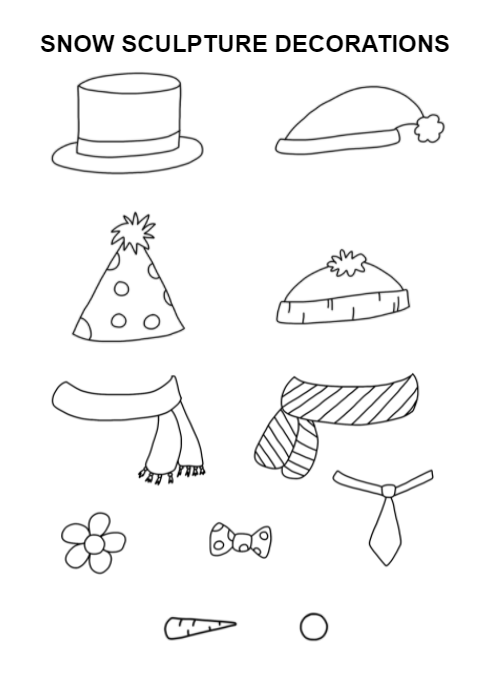
Matching potion, recipe, or quest ingredients
Matching games are another fun one, and they help build reasoning, recognition, and sorting skills (all milestones scattered amongst that 2-5 year old range).
You can use all kinds of methods:
- Identify and match pictures
- Sort by color
- Sort by number
(and a lot more)
The two examples that I show here are for finding potion ingredients for a wizard, but you can adapt this to LOTS of different situations:
- Find all the flowers on the list for the druid
- Match the dinosaurs to the survey report
- Find all the green objects in the pile for the dragon’s hoard of green shinies
Ingredients list
This first one is a list of ingredients that the wizard gives to the player’s character. The character needs to go to the wizard’s garden and find all the ingredients by drawing a line to match them across! It’s not really complicated, but for a 2-3 year old, it’s a great intro to this type of practice worksheet.
You can also make it more complicated by adding more options OR, if you kids are starting to read, having them match the picture to a word on the ingredient list.
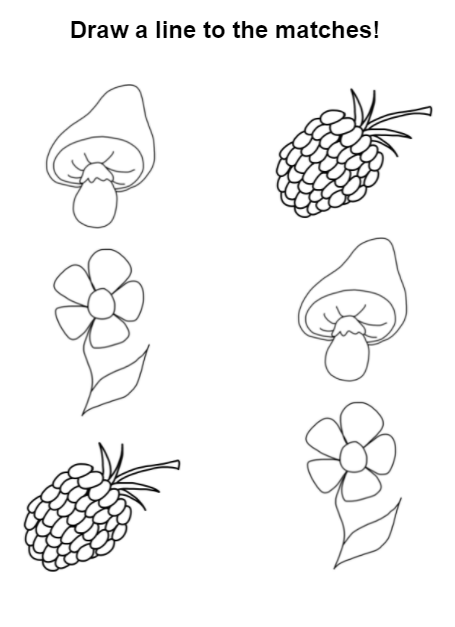
Two potions!
Another method that I use for the potion making example is to collect a bunch of random toys in a couple colors and have my kid sort them out for two different “potions”. It only took maybe 3 minutes to pull this together, and having physical objects to move around was a good change of pace mid-game and provided a tactile activity.
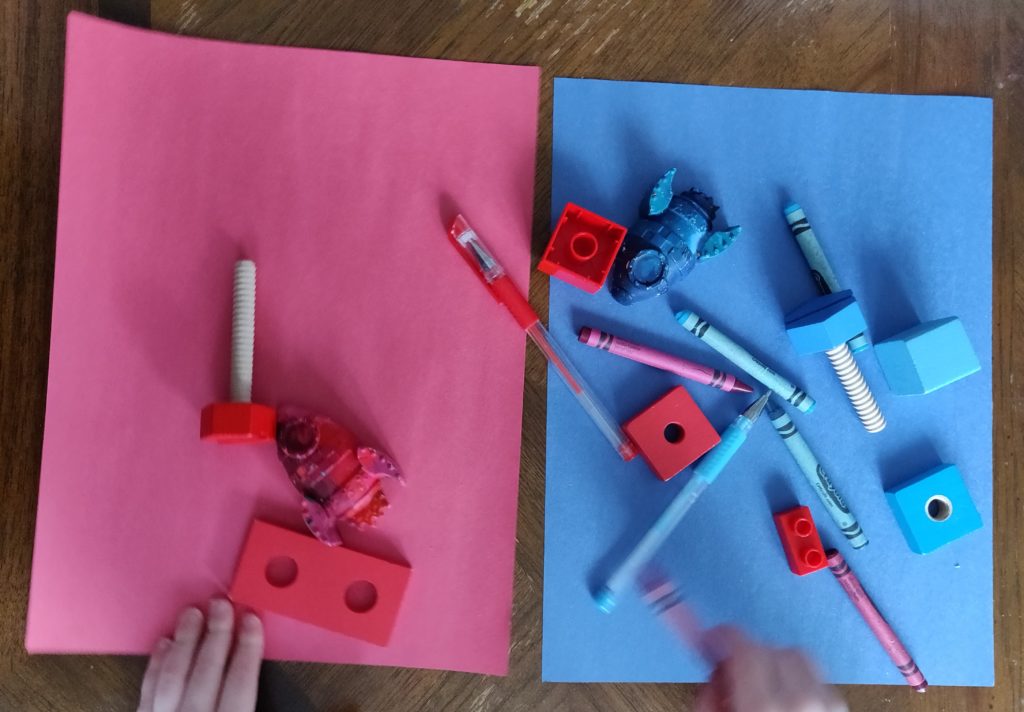
Navigating mazes – the map is the game!
I’m also a big fan of doing mazes – they help practice reasoning and planning, plus, they’re easy to get ready. There are a lot of printable kid’s mazes available online if you just search on google, and I’ve been able to find themed ones that match our games pretty easily. If you want to draw them too (not everyone has a printer), they don’t need to be complicated.
Find your way to the end!
The most common type of maze is to get to the end or get to the goal, like this one shown below – the objective given to players is to just get to the cat and dog’s house through the town. While doing it, my kid asked questions about the areas being passed, looped around in circles, made car noises, and took a fairly long time, considering how simple it was… because he was having fun and exploring. So, while the objective may be to eventually get to the end, the goal is for your kid to have fun and check out different areas along the way too.
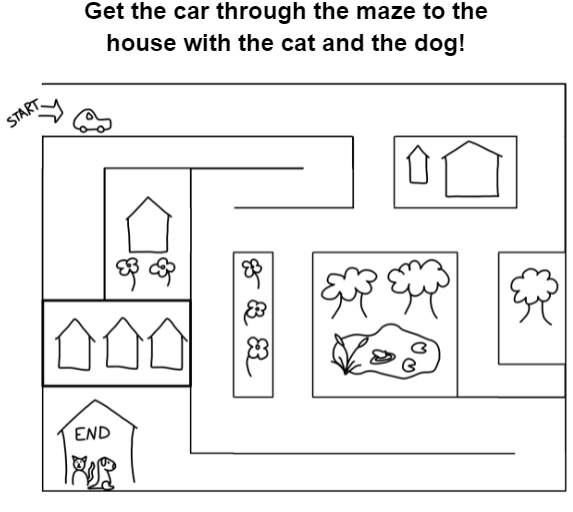
Scavenger hunt!
In this example from a Halloween special, I numbered different areas of the map, and when my kid got to them, I read off what item from the scavenger hunt game was at the number. This encouraged more exploration than just getting to the end and left some mystery or opportunity for RP down each corridor as my kid searched for all the Halloween decorations on the list.
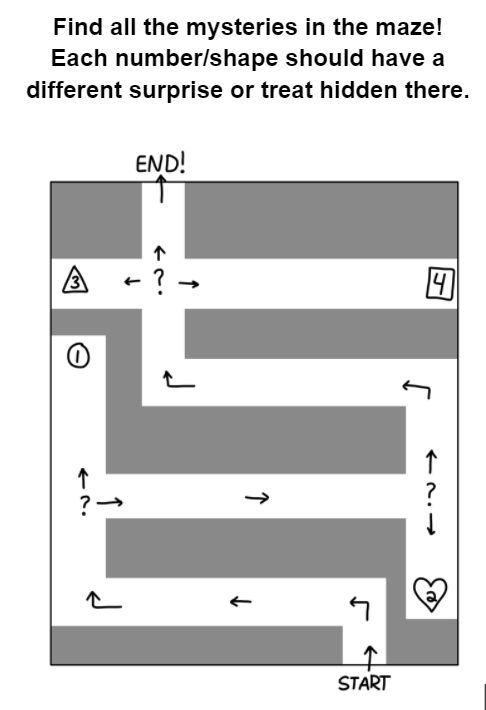
Tracing spells to practice fine motor skills
I liked this one because it was great for practicing shapes AND made it easier for my kid to start practicing tracing letters.
In the example here, I just had my child practice making the shapes whenever it was time to cast a magic spell. If it looked like there was some effort, the spell succeeded. You can also do this by having your child trace lines on a picture (like a coloring book), doing connect the dots sheets, or by making shapes with a stencil.
To level it up – if your kid already knows their shapes, you could start with tracing letters and numbers. If your child wants to cast a wind spell, maybe you write out the word W-I-N-D and encourage them to trace it to do the spell. They’re invested in casting the spell for the story, so I’ve found it’s a lot easier to practice this in-game versus just doing daily routine spelling and tracing exercises.

Mixing a potion!
My kid loves helping in the kitchen, especially when getting to add ingredients or mix things up, so I 100% brought that into our games. When you have characters that are cooking (let’s make sandwiches for the hungry guard), making potions (we can get over the castle wall if we made a flying potion!), or are getting creative with their inventory (what happens when we stir the super bubble solution in the moat…?), it can help to play it out in a little more real way than to just say it.
I’m using potions again as my example here, but there’s a lot of options! I even made a whole series around making food (with actual recipes built in) because this clicked so well with my kid, so please extend this past just potions!
Paper pieces and toy kitchen food
I like to cut out pictures of food (from drawings, coloring sheets, magazines, etc) or take pieces from the toy kitchen and let my kid throw them into a bowl and mix them up to make “magic potions”. This is a lot of very low effort fun… your kid can have fun experimenting with “recipes”, but there’s no real clean up required. For this one here, I challenged my kid to make a freezing potion… and he decided to find everything that would be cold to mix together (play kitchen ice cream, ice cubes, watermelon, etc) . I then let my kid mix it all up, and walla! Magical freezing potion in the inventory!
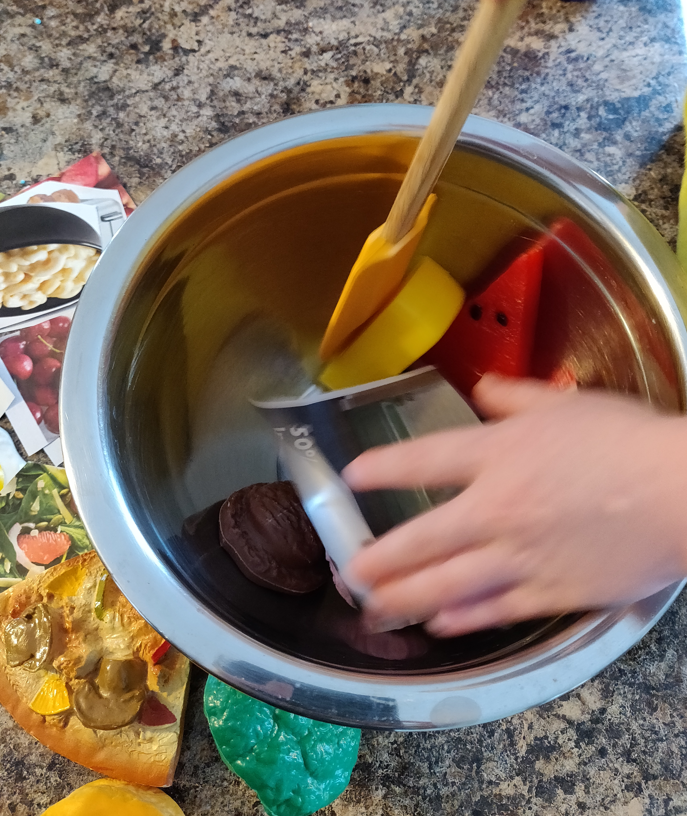
An actual potion?!?
Sometimes, we will also make a real potion… i.e. a smoothie that’s incorporated into the game. My child LOVES doing this because it gives him some freedom AND leads to a tasty snack. It also teaches that healthy food can be fun and taste good – I like to explain along the lines of, “blueberries are actually kind of like magic ingredients because they have vitamins that make you healthy… and they turn the potion all blue!!”
For this one, my kid was getting fidgety, and it was close to snack time, so we conveniently needed to go make a health potion to cure a yeti’s cold. My kid picked out all the ingredients (blueberries, carrots, and banana), hit the button on the blender, and then *had* to taste test it before sharing some with the yeti (played by me… so I get a tasty treat too).
And there’s so many other ideas to try!!
There’s a ton more ideas that I could keep going on about (like the ones I quickly show below).
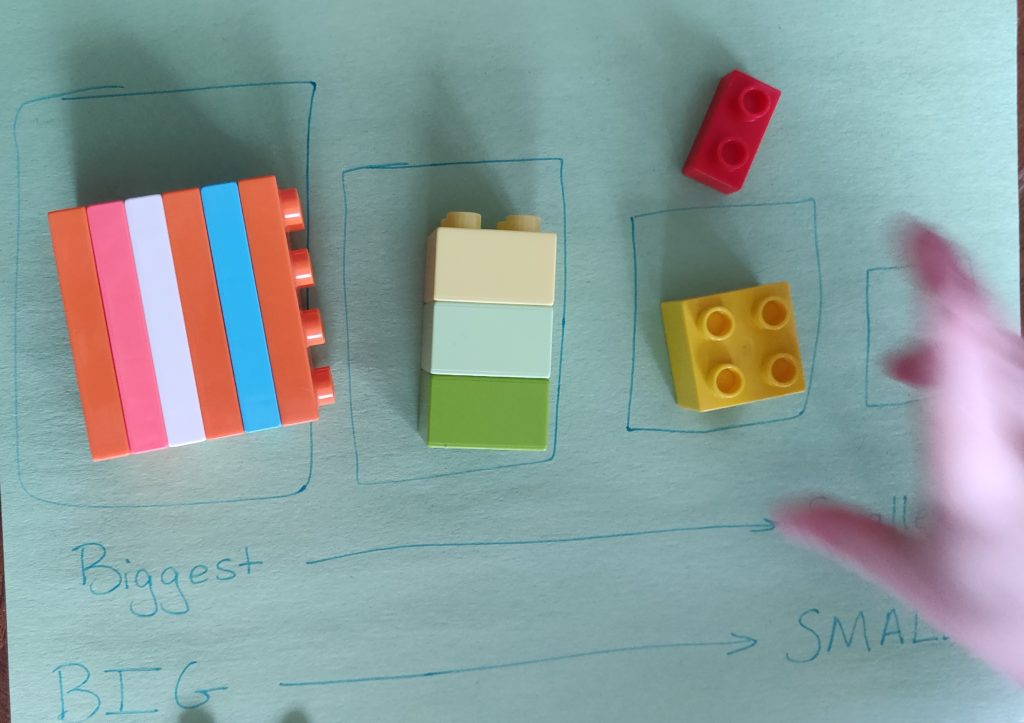
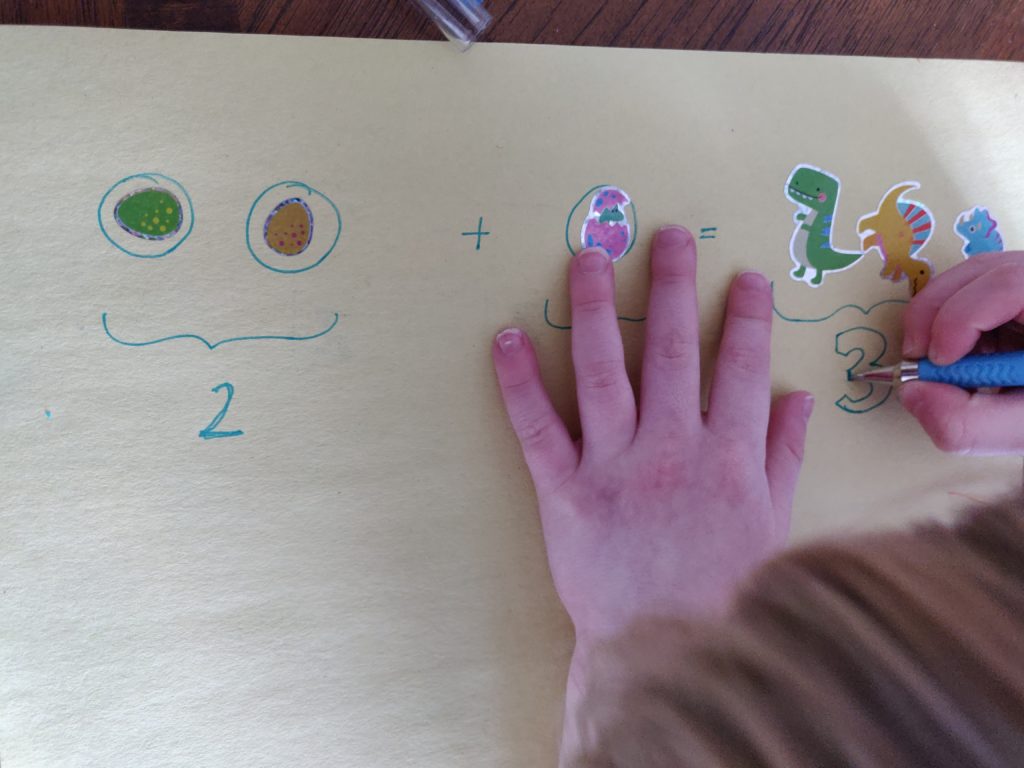
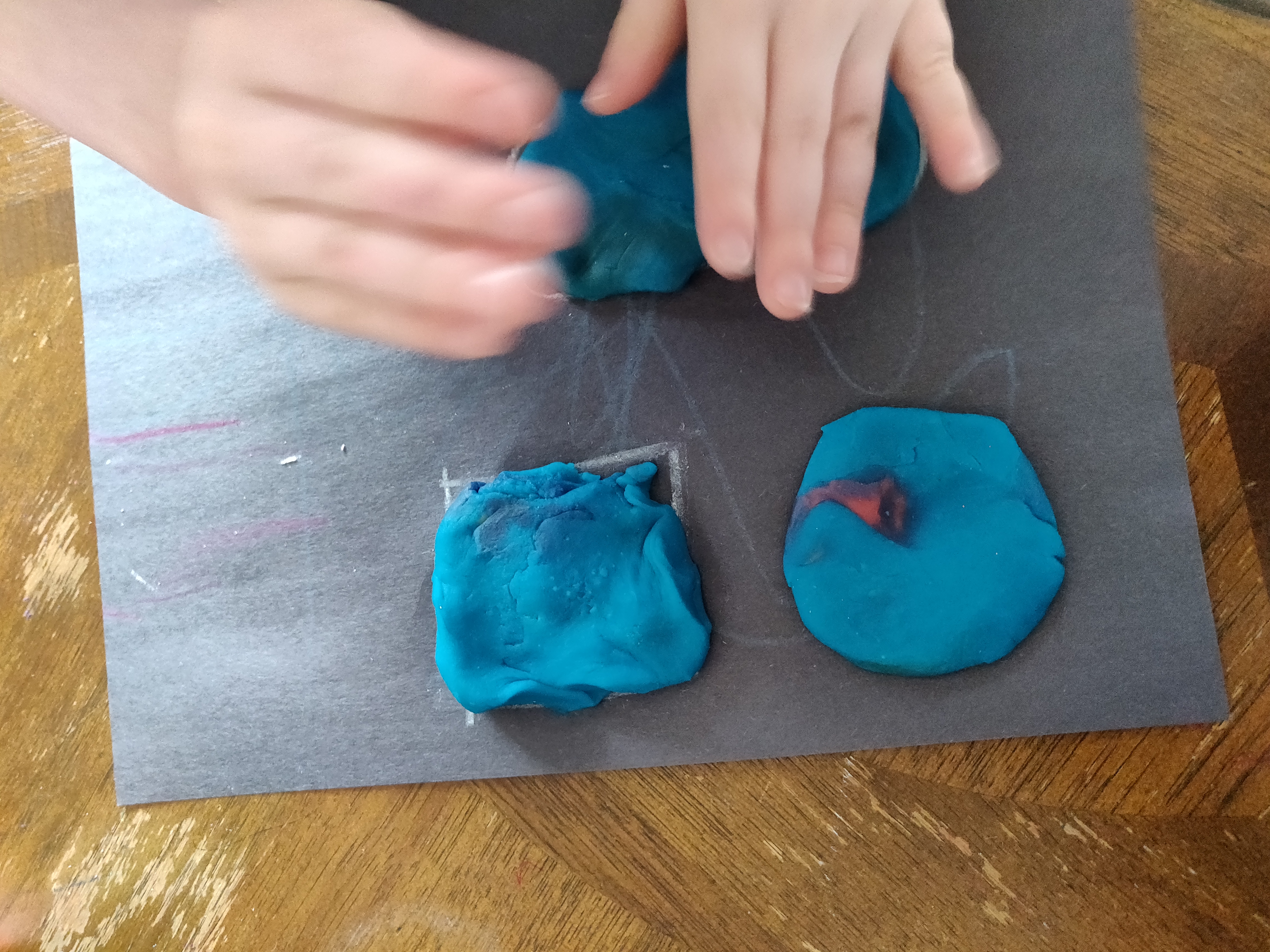
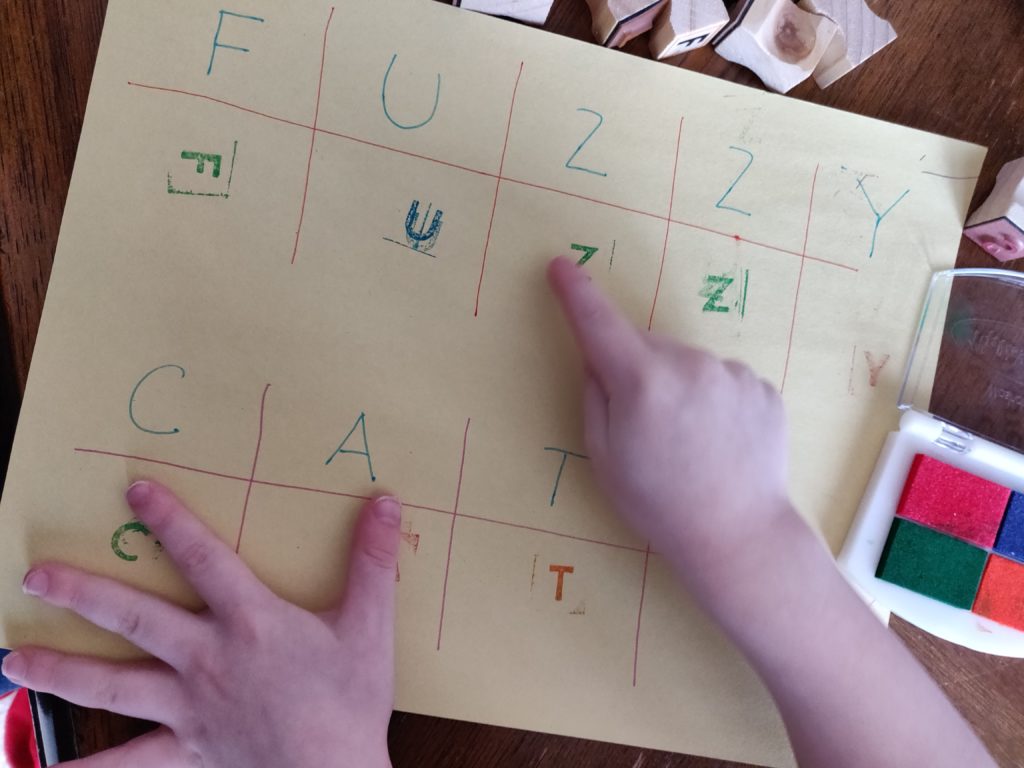
You can also use games that you already have at home. Maybe you…
- Pause in your tabletop RPG session to play Go Fish with a deck of cards to simulate a fishing tournament
- Pull out a small puzzle that needs finishing to unlock a secret dungeon door
- Bust out Hungry Hungry Hippos when you need to feed all the zoo animals
There’s a lot of options, and they can be very low effort on your part, but the benefits are huge! Through all of these, your kids are learning and having fun… and they get way more invested in the story you are telling together.
I hope these ideas help with your games, and please (!) let me know below if you have some of your own ideas! I would love to hear them, and I’m sure others reading would appreciate it as well.
And… you can find the free bundle of mini-games pulled from the StoryGuider collection here on itch.io as well for some printable ready-to-use activities or to get more ideas for your own games! I hope it helps and you enjoy the games!
If you liked this post, make sure to subscribe to the TTRPGkids monthly newsletter to stay up to date on the latest reviews, tips and tricks, game and podcast list updates, and more! Thank you for playing tabletop RPGs with your kids and sharing this awesome hobby with the next generation!

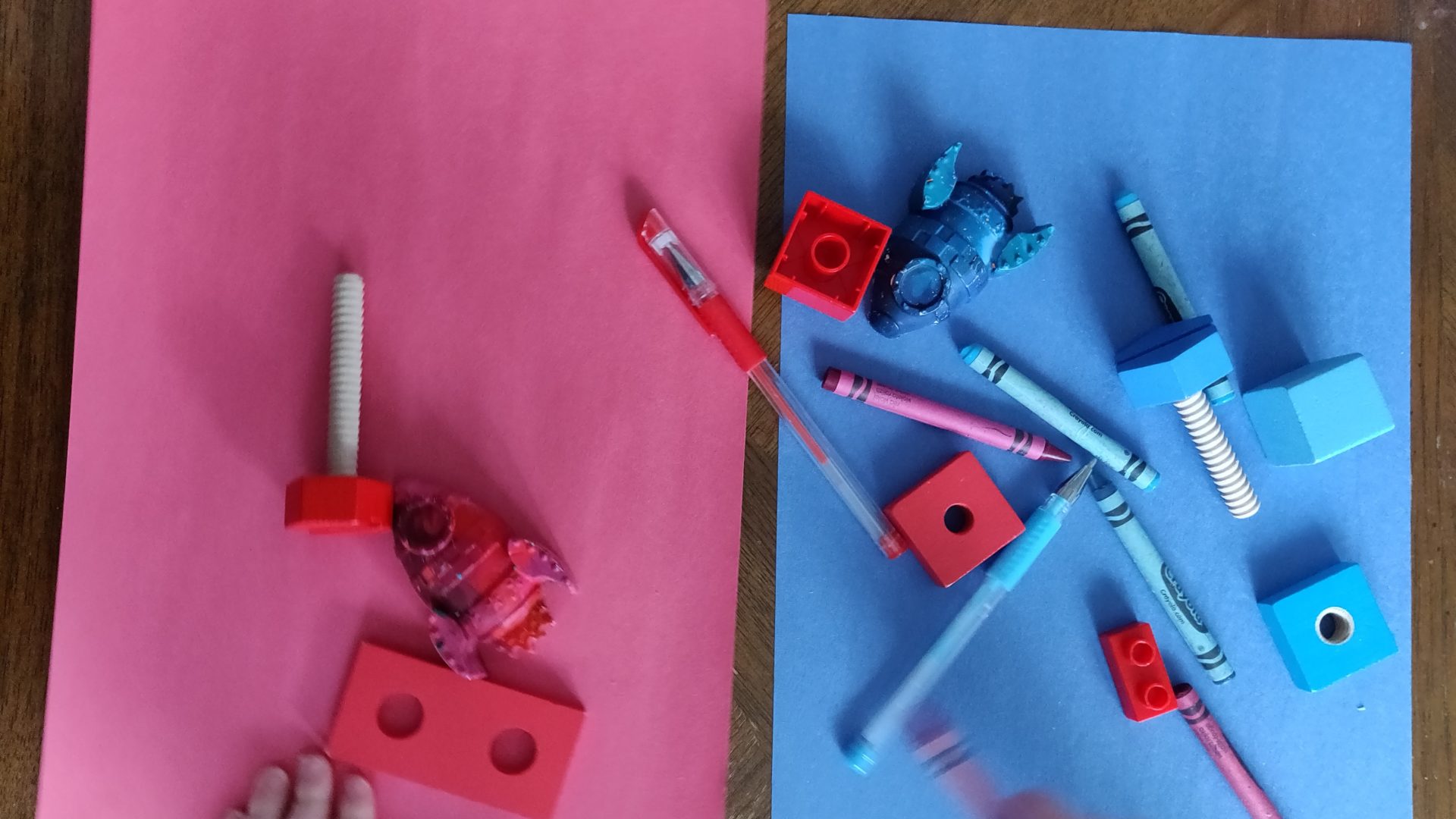
1 thought on “Tips and Tricks: Using Mini-Games in tabletop RPGs for young kids!”